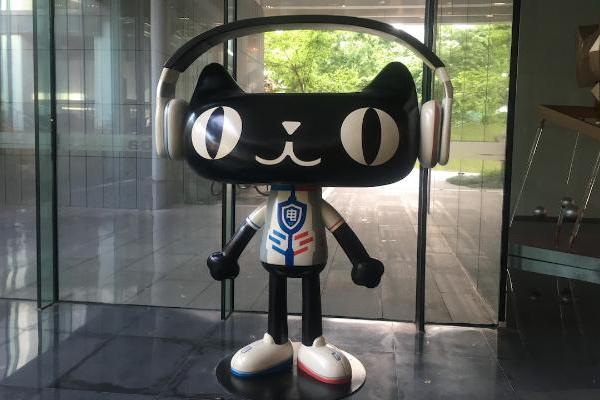是不是真的有「空鼻症」( 四 )
不管这些有争议的情况的正确性,对于那些相信自己存在这种状况的朋友们来说,他们的经历是相似的。他们挨个得寻找大夫,渴望得到一个诊断,或至少得到一个医生可以认真对待他们的疾病。在一项研究中,慢性疲劳综合症的病人说:“缺乏承认的情况对我们来说,可能比自身的状况更加糟糕。”【与此同时,即便现有的资源对其的态度是未知的或者有争议的,真正的病症那些体验起来真实的,——持续存在着。】症状持续的时间越久, 越有可能会加剧患者的潜在的心理状况(焦虑,抑郁,强迫性官能症)或者制造这些问题。
To suffer is one thing. To suffer and be told by medical professionals that nothing is wrong? That’s enough to make some people want to end it all.
正在承受的(痛苦,译者注)是一个原因。承受着(痛苦,译者注)并且被医疗专家们告知你没有任何问题? 光光这点足够让一些人想要结束这一切。

Inside your nose are two bony shelves divided by your septum, and these shelves contain three sets of turbinates. Each side of the nose contains a low, middle, and high turbinate. The low one, called an inferior turbinate, is the biggest — like a small cigar, about five or six centimeters long — and inside the inferior turbinate are blood vessels that can swell and shrink dramatically. (Imagine a penis and you’re not far off.) Turbinates help regulate airflow through the nose and also warm, filter, and humidify the air using a moist outer lining of tissue called mucosa.
在你的鼻子里面有两个骨头的架子,中间被你的鼻中隔分开了,这些部分带有三组鼻甲。每边的鼻子都带有一个下,中,上鼻甲。低的那个,叫做下鼻甲,是最大的——像一根小雪茄,大概有5-6厘米长——在下鼻甲里面有着血管可以使鼻甲剧烈得收缩和膨胀。(想象一根阴茎,你没有想太远。)鼻甲使用一种湿润内层的组织粘膜帮助调节空气经过鼻子帮助温暖,过滤,湿润空气。
Allergies, sinus infections, and other conditions can cause the inferior turbinate to stay enlarged, which leads to nasal blockage. If that’s the case, and if antibiotics don’t work, it’s not unusual for an otolaryngologist to recommend reducing the inferior turbinate (and, in rare cases, the middle turbinate). There are a number of ways to do that, and there’s no consensus on which method is best. Some doctors break the bone and move the structure out of the way. Some remove about one centimeter from the head of the turbinate. Some remove the bottom third of the entire tube. Others leave the outer tube alone and remove the inside, like taking the tobacco out of a cigar. Some doctors shrink the turbinate using cauterization or radio frequency. Sometimes doctors remove the entire turbinate — a total turbinectomy — though that method has fallen out of favor in the U.S. Often these procedures are done in combination with a septoplasty to fix a deviated septum.
过敏,鼻腔感染,和其他的状况可以使下鼻甲保持膨胀,引起鼻塞。如果是这原因引起的,而且抗生素不起作用,耳鼻喉医生们建议消减下鼻甲并不是不寻常的{另外,在极少数案例中,会消除中鼻甲}。执行这种手术的方案有很多,然而关于哪种是最好的没有一致的观点。有些移除了鼻甲初段一厘米。有些移除整个鼻甲的三分之一。有的不动鼻甲的外面然后切除里面,就像抽卷烟和香烟一样。有的医生们用灼烧/腐蚀收缩鼻甲或者用射频消融。有的时候医生们会移除整个鼻甲——一个整个鼻甲切除术——尽管这种方法已经在美国失去了支持。这些手术通常会在一个鼻中隔成型手术中作为附属手术去完成。(我们患者们习惯把这种打包手术叫做鼻甲全家桶=。=)

Illustration by Bryan Christie
在手术之前
The CDC estimates that in 2006 (the most recent year of data), more than 900,000 people underwent nasal surgery. Though the CDC couldn’t provide data regarding turbinate surgeries specifically, the doctors I spoke to say a turbinate reduction is probably the most common procedure in rhinology, and they also say most of those patients walk away happy.
疾病控制中心在预测,在2006年(最近一年的数据)超多900,000 人做了鼻腔手术。尽管CDC不能提供具体的,关于鼻甲手术的数据,(但是,译者注)与我谈论医生们说鼻甲缩减术应该是在鼻科中最普遍的手术,而且他们说大部分的病人非常开心得离开了。
So imagine you’re an otolaryngologist operating on hundreds, maybe thousands, of patients. In follow-up appointments, almost all of them thank you for helping them to breathe normally for the first time in years. Only a handful are dissatisfied. One patient says he can’t breathe correctly. He feels like he’s suffocating. But everything looks great in his nose. The airway is completely open. The surgery did exactly what it was supposed to do.
所以想象一下你是一个耳鼻喉科的医生已经给上百或者上千的病人做过手术。在后续的就诊中,他们中的大部分人会因你帮助他们在这些年里第一次正常呼吸而感谢你。(然而,译者注)只有数个是不高兴的,但是他的鼻子里面看起来是如此得正常,通气道是全部敞开的。(他的,译者注)这个手术已经按照预期精确得完成其使命了。
And yet the patient keeps coming back, complaining more and more. He seems anxious, jittery, depressed. He’s not sleeping well. He’s having trouble performing everyday tasks. With each follow-up appointment, he becomes increasingly agitated. He says this routine surgery resulted in empty nose syndrome and ruined his life. You’ve heard of the condition, but you also know some doctors are skeptical of it. 【You certainly never spent time on the topic in medical school, where otolaryngology students concentrate on more common nasal problems, like sinusitis, deviated septum, and cancer. Not to mention the ears and throat.】
然后到现在为止,这些病人也在不断得回来,他们的抱怨也变得越来越多。他看起来开始焦虑,紧张不安,抑郁,而且睡得不好。他处理日常任务开始有困难了。在接下来的每一次跟踪会诊中,他的焦虑开始持续增长。他说这次日常手术导致了他得了空鼻症,并且毁了他的生活。你已经听说了这种疾病,但是你也知道有些医生对此是怀疑的。你肯定从来没有在医学院的课题中进修过,在那里耳鼻喉的学生们专注于更常见的鼻腔问题,像鼻窦炎,鼻中隔偏曲,和癌症。还没论及耳朵和喉咙。(你在这里应该是指就诊医生)
Lots of other patients have appointments lined up, and they all take time. This outlier is taking time away from those patients. 【 Eventually, you throw up your hands and discharge him from your practice.】
很多其他的病人在会诊中排着队,他们都在等待着。这个异常的病例会挤走其他病人的时间。【最终,你放弃了他并且不再会诊他。】
There’s only one explanation: This patient is crazy.
这只有一个解释:这个病人是疯了。

Doctors like Houser in Cleveland, Payne at UVA, Jayakar Nayak at Stanford University, Subinoy Das at the U.S. Institute for Advanced Sinus Care and Research in Columbus, and researchers at Ohio State University are studying empty nose syndrome and trying to figure out why some patients get it and others don’t. Houser, Nayak, and Das treat ENS patients with implants and/or injections, and many of these patients have seen improvement. (Carol Helling says Brett received injections from Das but saw only temporary improvement; Das declined to comment for this story.)
Payne(佩恩)在UVA(美国弗吉尼亚大学), 在斯坦福的Jayakar Nayak(人名),在哥伦布的高级鼻窦的高级护理和研究机构的Subinoy Das,和在俄亥俄州立大学的研究者,像在克利夫兰的Houser大夫一样,他们都在研究空鼻症并且尝试去弄清楚,为什么有的人会得这种病有的人却不会。Houser, Nayak, 和Das(达斯)使用植入或者注射手术治疗空鼻症病人,他们中很多人的症状都得到了改善。(Carol Helling 说Brett接受了Das的注射但是只见到了暂时的改善; Das 拒绝对这个故事进行评价。)
Yet fundamental questions about ENS have yet to be answered. Are there environmental factors? Doctors in warm, humid climates like Singapore and Australia routinely perform total turbinectomies, and instances of ENS aren’t reported there as often, even though one study has shown that as many as 20% of patients who have their entire inferior turbinates removed could develop ENS.
到这里关于空鼻症的基本问题应该被回答了,空气环境因素重要吗?即便有一项报告说明20%的病人做了整个下鼻甲移除手术后会发展成为空鼻症,在温暖湿润气候的地方像新加坡,澳大利亚那里实行得常规所有鼻甲切除术中,医生们关于空鼻症的报告没有那么频繁。
And what accounts for the delayed diagnoses? Some patients begin experiencing symptoms months after the surgery; for others, symptoms don’t arise for years.
被延迟诊断的比例的病人有多少呢?有些病人在手术后几个月后就有了症状;然而有的人几年内都没有。

Courtesy Jayakar Nayak
Dr. Jayakar Nayak
No one knows for sure why some turbinate reductions result in ENS and others don’t, but there are currently two prevailing theories. Houser’s theory argues that for ENS to occur, turbinate tissue must be removed or damaged, and then the sensory nerves in that area must regenerate poorly. Some methods of turbinate surgery can damage the nerve-rich mucosal layer more than others.
没有人知道为什么鼻甲消减手术会引起空鼻症,而其他的人不会,但是有两个流行的理论。Houser 的理论认为,在鼻甲组织被移除或者损坏后,处在那里的神经传感器很再生得非常缓慢,空鼻症是因此发生的。有些鼻甲手术的方法,对富含神经的鼻粘膜层的伤害比其他的手术更大。
The other theory has to do with airflow — that the shape of a patient’s nose, and the way air flows through that nose, makes a patient more or less susceptible to ENS. Payne also thinks turbulence plays a role. “The more turbulent the airflow, the less you’re going to get a sense of good breathing,” he says. “It’s like if you stick your head out the window of a moving car, you can breathe in through your nose and feel the air moving through there, but I almost get anxious, because the air seems like it’s so poorly moving through the nose. I wouldn’t be surprised if in the empty nose patient, it’s not just a sense of decrease in receptors. It’s also an increase in the turbulence.”
有另一个理论对应着空气流动——病人的鼻子的形状和空气通过鼻子的方式,使病人或多或少容易受空鼻症的影响。Payne 也认为(气流的)动荡扮演一个角色。“气流越混乱,你得到呼吸正常的概率越低,”他说:“这就像假如你在一辆运行的汽车中,你把的头伸出窗外感受气流,你可以通过你的鼻子呼吸感受着气流在那儿的流动。但是我(会,译者注)变得焦虑,因为空气似乎很少进到我的鼻子里面。当这种现象发生在空鼻症患者的身上时,我并不感觉奇怪,这并不是仅仅一个鼻腔传感器的缺失。它也引起了鼻腔的气流混乱。
推荐阅读
- 偏远地区211大二下学期,是不是建议复读
- 常有酒局饭局的部门内部成员(如销售)真的比其他部门感情好吗
- 千百年来,欺骗,虚伪都是每个人心里厌恶的品质,为啥不能退化掉或者未来是不是可能退化掉
- GPA低,但是实习经历丰富,申请新加坡的名校是不是没有希望?
- 品味差距真的有这么大吗
- 前几天听一个演讲,说九零后都不买房,未来房价会降,是真的吗
- 怎样和异性同事聊当下的露骨话题
- 反对大部分人支持与喜欢的,嘲讽那些支持与喜欢的人,是不是知乎的惯例
- 女生太能干了,是不是男人们都不喜欢
- 啥是neuroPEPT是不是可以放心服用















